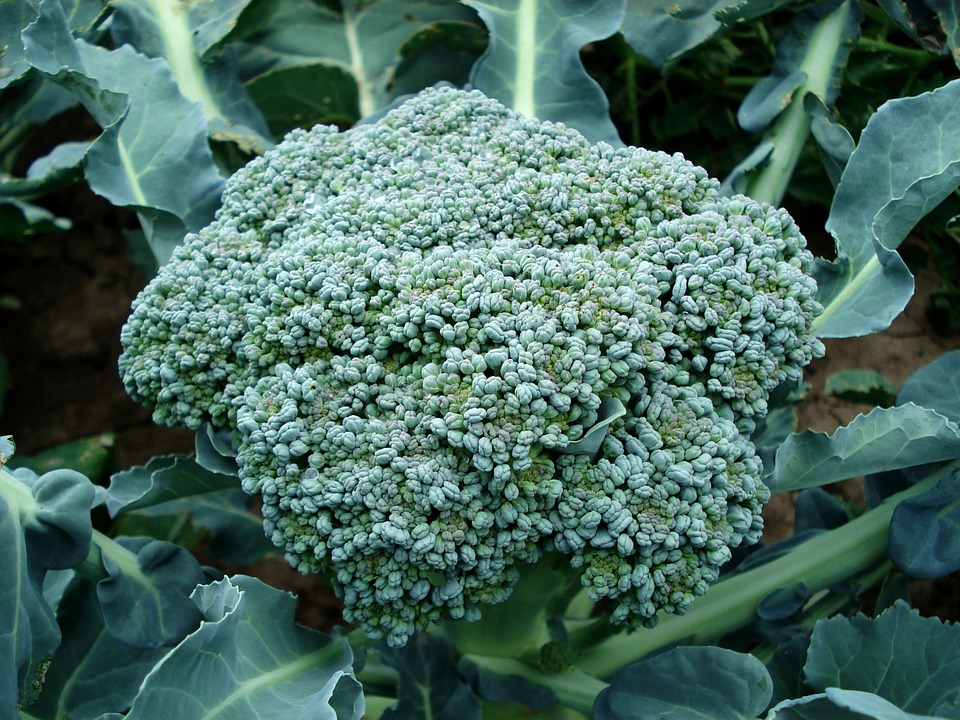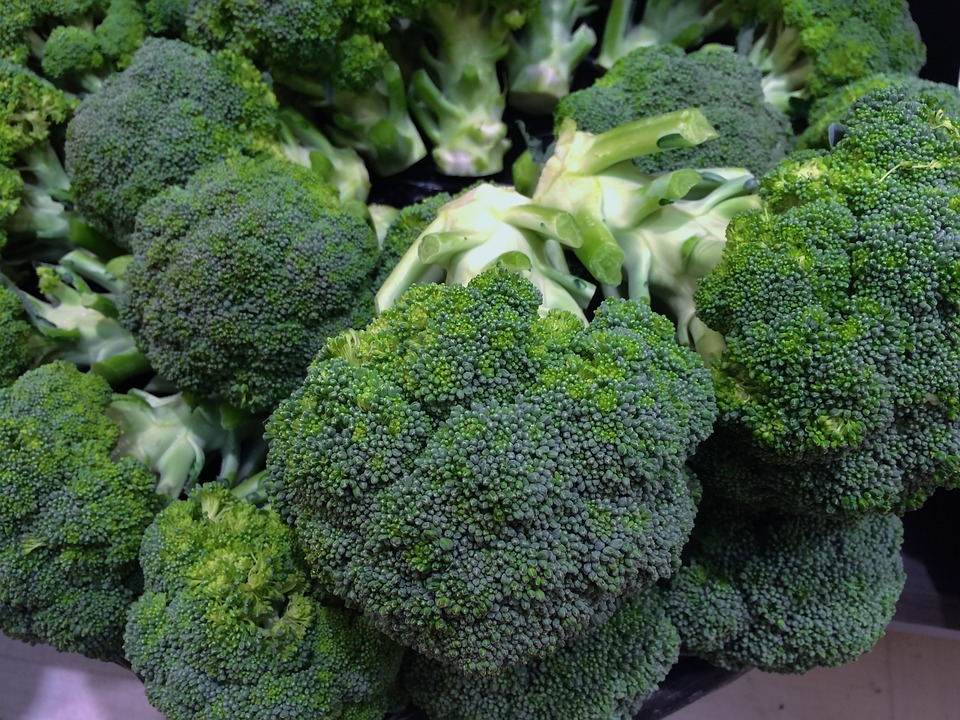A step by step guide for Growing Hydroponic Broccoli
Today, we learn hydroponic broccoli growing techniques, tips, and ideas. Along with how to grow hydroponic broccoli, we also learn about Hydroponic Broccoli nutrient solution. Whenever you plug into master chef’s videos or visit high rated food marts you will definitely come across fancy cabbage-like vegetable known to be highly nutritious that too with expensive price tags yes it is broccoli. Broccoli is crunchy cabbage which is palatable in sandwiches, salads even more admired as broccoli sprouts which are no different but microgreens or immature broccoli plants, As usual, to make your gardening interesting, innovative and rewarding we here with a complete guide for how to grow broccoli or hydroponic broccoli sprouts in soil-less culture, hydroponics. The beauty of growing Brassica is, its species has considerable potential under hydroponic production. Not only can the everyday, old-fashioned cabbage and cauliflower be grown, but a diverse range of exotic broccoli, Asian brassica species are now grown hydroponically such as hydroponic broccolini, many of which are suited to smaller systems, NFT, solution culture, aeroponics, vertical farming broccoli, hydroponic Brussel sprouts, and even tray-based microgreen production.

To have a cinematographic look of growing broccoli in the hydroponic system you can also watch any YouTube hydroponic broccoli video which may encourage you more to opt for hydroponic broccoli.
Broccoli is a vegetable that is very well suited to being grown hydroponically, is fast growing hydroponic plants in any of the hydroponic system same as its cousin vegetables hydroponic lettuce and hydroponic cabbage. As long as you are able to control the growing conditions it will surely give you a great crop each and every time much better than the conventional growing system. The best way to achieve this is to plan out your method in order to make sure you are able to provide your plant with the desired conditions in which they thrive. It can be started from seeds or plants available at many nurseries or even online. If you are starting from cuttings it is best advised to harvest them from mature plants.
Media bed method of hydroponics is recommended because Broccoli grows into a large and heavy plant by the harvest time. Growing broccoli is moderately difficult for beginners because it is a high nutrient demanding plant and also susceptible to the warmer temperature.
You may also check Growing Cilantro, Planting, Care, Harvesting.
Getting hydroponic broccoli started:
- This first step of raising hydroponic broccoli is to decide what actually you are starting with which cultivar or variety.
- Nowadays, standard head broccoli has been united by a variety of broccoli types including Raab, leaf, sprouting, and Chinese broccoli each of them with their own culinary uses. Sprouting broccoli, which is available as both green and intense purple colored types produce a number of small individual florets rather than a complete single head. Being very tender, sprouting broccoli can be eaten raw, steamed, or sautéed and has become an admired winter vegetable. Leaf broccoli is another option well-suited to small hydroponic systems, although lesser recognized as a culinary vegetable. These fancy leaf broccoli types may be grown as a baby leaf salad vegetable or larger leaves grown for their sweet, typical broccoli flavor.
‘Blue Wind’ (F1 hybrid, 49-55 days duration) is an extra-early variety that produces large, tight heads in about 60 days. Has good side shoot production for a longer harvest, and the tender, bluish-green leaves near the top of the plant.
Di Cicco’ (Heirloom Broccoli variety 48 days) is a multi-cut Italian heirloom variety that’s a good choice for the home gardener because plants mature at a variable rate. It produces a small, 3-4” (7-10 cm) main head, followed by a large number of tender side shoots appears over a few weeks. Harvest main head at 3” (7 cm) or less to encourage side shoot production.
Calabrese’ (Heirloom, 65 days) is great for fall planting since the heads get sweeter as the weather cools. Produces medium-sized, deep green heads. Bears good side shoot production after the central head is harvested.
Arcadia’ (F1 hybrid, duration 63-68 days) produces uniform, small-beaded purplish-green heads, each about 5-6” (13-15 cm) across. This is one of the best types of broccoli for fall and winter production. Has resistance to head rot, downy mildew, and brown bead.
Punjab Broccoli -1 leaves are smooth, wavy and dark green its main as well as secondary sprouts are dark green in color, as well as sprouts have bluish shade. The sprouts are also compact and attractive. It is ready after 65 days of transplanting. Suitable for both salad as well as cooking purpose.
- Starting from seed is the best and easy choice to grow broccoli in any hydroponic system, the seed takes about 7 to 14 days to germinate. You can buy seeds of required variety from any online store but make sure while buying seeds make sure it is suitable for the current season as the seed ages, germination declines rapidly.
- Since it is a cold season crop so before sowing you can also give seeds chilling treatment by keeping them in the refrigerator for few days prior to sowing.
- Broccoli Seeds germinate ideally at temperatures between 45ºF to 80ºF but can also germinate at temperatures as low as 40ºF, with comparatively lower germination success rate.
- Broccoli seeds can be started usually, in rooter plugs with potting soil or coco peat and then transferred to the hydroponic setup when they sprout. Roughly 3 to 4 seeds per plugs are sufficient, anticipating that some will not germinate and weaker ones can be removed out later.
- They should be kept on a tray and watered daily with 1/4 strength nutrient solution till the seeds germinate. After sprouting it is advised to use half strength of the solution.
- Once the seedlings are growing, thin out the extra seedlings leaving only one of the fittest looking ones in each starter plugs. Some of the thinned out plants may be suitable for transplant elsewhere may be on the garden.
- When roots begin to show up and seedlings attain a few inches tall and it has 4-5 true leaves they are ready to leave the nest and enter into the hydroponic setup.
- Broccoli plantings should be staggered at roughly 3 to 4-week intervals in order to ensure a constant harvest.
- Transplanted seedlings can also be obtained from nurseries but it may bring soil-borne diseases and insect pest hence one has to be more careful when transplanting them in the hydroponic setup.
You may be interested in Growing Hydroponic Amaranth.

Hydroponic Broccoli nutrients and pH
- pH is extremely significant in Hydroponic gardening. Broccoli thrives in a range of 6.0-6.8, PPM: 1960-2450 and EC: 2.8-3.5.
- As mentioned above broccoli plants are little trickier to grow under hydroponics due to its nutrient requirement. Make sure you provide enough nitrogen levels when the plant is in its vegetative stage, as it promotes good foliage growth.
- The nutrient solution must be added to the reservoir twice daily also depending upon the location of your hydroponic system. You can buy nutrient solution such as general flora series online from a variety of online sites and horticultural shops in the market.
- Hydroponic broccoli grows well in most of the hydroponic system as long as they are given sufficient space to grow. Setups like dutch buckets, deep water culture, ebb and flow works excellent though NFT are less preferred because one has to adjust the width of pipe for broccoli to spread well.
- Hydroponic broccoli plants should be given 40-70 cm space between plants to facilitate plenty of room to spread out and yield well. Its leave may grow large so make sure to trim them back so that they don’t obstruct light for other growing plants.
- Broccoli grows finest when the daytime temperature is at 14-17°C. For head formation, varieties require a temperature of 10-15°C. Higher temperatures cause premature bolting.
- In a 24-hour cycle, broccoli should receive a bare minimum of 10-12 hours of light. If you are keeping your system indoors you should install grow light for the plants, broccoli plants don’t need intense light simple LEDs or T5 fluorescent are enough.
- The best time to harvest broccoli is when the head is developed, buds are firm but before the flower starts to open. It is better to harvest broccoli head only not the entire plant. Cutting the stalk of the main head at a slant about 4 to 5 inches below the broccoli head stimulates the more plant growth and give rise to more shoots. Hence more heads can be harvested repeatedly .it may take about 60 to 100 days to harvest after transplanting usually. Store fresh harvested hydroponic broccoli in the refrigerator for up to 5 days. If you wash before storing, make sure to dry it completely. Broccoli can also be blanched and frozen for up to one year.
Please also check How to Grow Organic Tomatoes on the Terrace.
Prominent Pests/Diseases of Broccoli:
- Aphids: Curling leaves may indicate that the plant’s sap is being sucked by insects. To avoid apply soapy water to all sides of leaves whenever you see aphids.
- Downy mildew: Yellow patches on leaves are usually due to moist weather. Keep leaves as dry as possible with good air circulation. You can also buy resistant varieties.
- Cabbage loopers: the presence of small holes on the leaves between the veins might be because of green caterpillars. Look at the undersides of the leaves.
- Cabbageworms and other worm pests
- Cabbage Root Maggots
- Whiteflies
- Nitrogen deficiency: If you observe bottom leaves turning yellow and the problem continues toward the top of the plant, the plants require a high nitrogen (but low phosphorus) fertilizer.
That’s all folks about techniques of growing Hydroponic Broccoli.
You may be interested in How to Grow Curry Leaf Plant from Cuttings, Seed.
I Am Truly Relishing Your Post. Do You Have An On-Line Training Platform?
At this point in time, we don’t have any training program.
what are the exact nutrients broccoli needs?